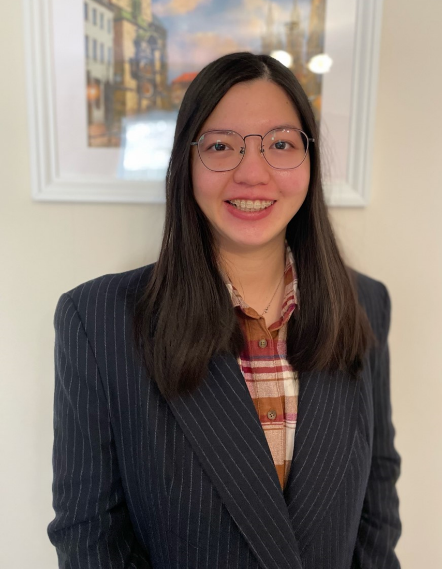题 目:Nanoscale Electrochemistry of Energy materials and Biomaterials
演讲人:Pei San E (Sharel)
时 间:2023年6月18日 (周日)16:00
地 点:化学化工学院C楼900号会议室
邀请人:宰建陶 副教授

个人简介:
Pei San E (Sharel) is a Lecturer in Chemical Engineering at the School of Engineering and College of Science and Engineering, University of Edinburgh. Sharel obtained her Ph.D. in Chemistry from the University of Warwick in 2016. Following that, she joined the Department of Chemical Engineering and Biotechnology at the University of Cambridge as a Knowledge Transfer Partnerships (KTP) research Fellow. Her work there focused on developing novel porous materials for electrochemical gas sensing. In 2019, Sharel became a Research Fellow at Warwick Manufacturing Group (WMG), University of Warwick, where she worked on the development of lithium-ion technologies, specifically lithium-ion batteries and supercapacitors. In 2020, she joined Teesside University as a Lecturer in Chemistry. In 2022, Sharel joined the University of Edinburgh as a Lecturer in Chemical Engineering, with a research focus on nano/microscale electrochemistry and super-resolution imaging.
Sharel's research lies at the intersection of fundamental research and business, where she develops skills in translating and exploiting laboratory-based research for commercial applications. Her current research areas include nanoscale/microscale electrochemistry for cancer cells, the development of electrochemical sensors (biosensors and environmental sensors), and electrochemical energy storage. Sharel's work has been published in reputable journals such as Nature, ACS Applied Materials & Interfaces, Carbon, Journal of Physical Chemistry C, Physical Chemistry Chemical Physics, and Journal of Electroanalytical Chemistry.
内容摘要:
Nanotechnology, based on the use of scanning electrochemical cell microscopy (SECCM), has a fundamental impact to revolutionise materials design (biotechnology and energy storage). SECCM is part of the family of scanning probe microscopy techniques which utilizes a nanoscale (or microscale) liquid meniscus formed at the end of a dual barrel nanopipette, as an electrochemical cell capable of achieving high resolution and localized electrochemical measurements. This setup enables high mass transport rates by manipulating the potential bias between the two barrels and is capable for studying ion transfer and electron transfer. SECCM is employed to study complex structure-activities and provided considerable new insight on some key electrode processes, including graphene, highly oriented pyrolytic graphite (HOPG), carbon nanotubes, polycrystalline Pt, and conducting diamond. SECCM has become a powerful technique for electrochemistry. Coupled with complementary microscopy techniques (i.e. atomic force microscopy (AFM) and field emission-scanning electron microscope (FE-SEM)), it allows for a correlation between structure and activity at the nanoscale to be obtained.
In term of energy materials, we have revealed a strong relationship between the surface structure and electrochemical activity of Li2O2 using SECCM. The nanoscale measurements revealed local heterogeneous behavior, with significantly enhanced electrochemical activity at toroidal Li2O2 structures when compared to the conformal layer. It follows that understanding the fundamental of structure-electrochemical activity of Li2O2 layers would be hugely beneficial towards improving device performance. In term of biomaterials, we showed the disordered sp2 carbon structure of the blister catalyzes the electro-oxidation of hydrazine compared to the basal surface of HOPG. The exploitation of nanostructured materials is utmost important in improving the performance of devices and batteries.
Currently, I hold a Springboard award which allows me to exploit biological activities of cancer cells using high-resolution microscopy techniques (SECM-SICM) coupled with redox molecules. My vision is that the advanced imaging technique with excellent spatial resolution will offer entirely new views of the heterogeneous processes on cancer cells at the nanoscale. This platform will advance the cancer diagnostics and therapies and provide insights beyond those attainable from microscopic techniques.



